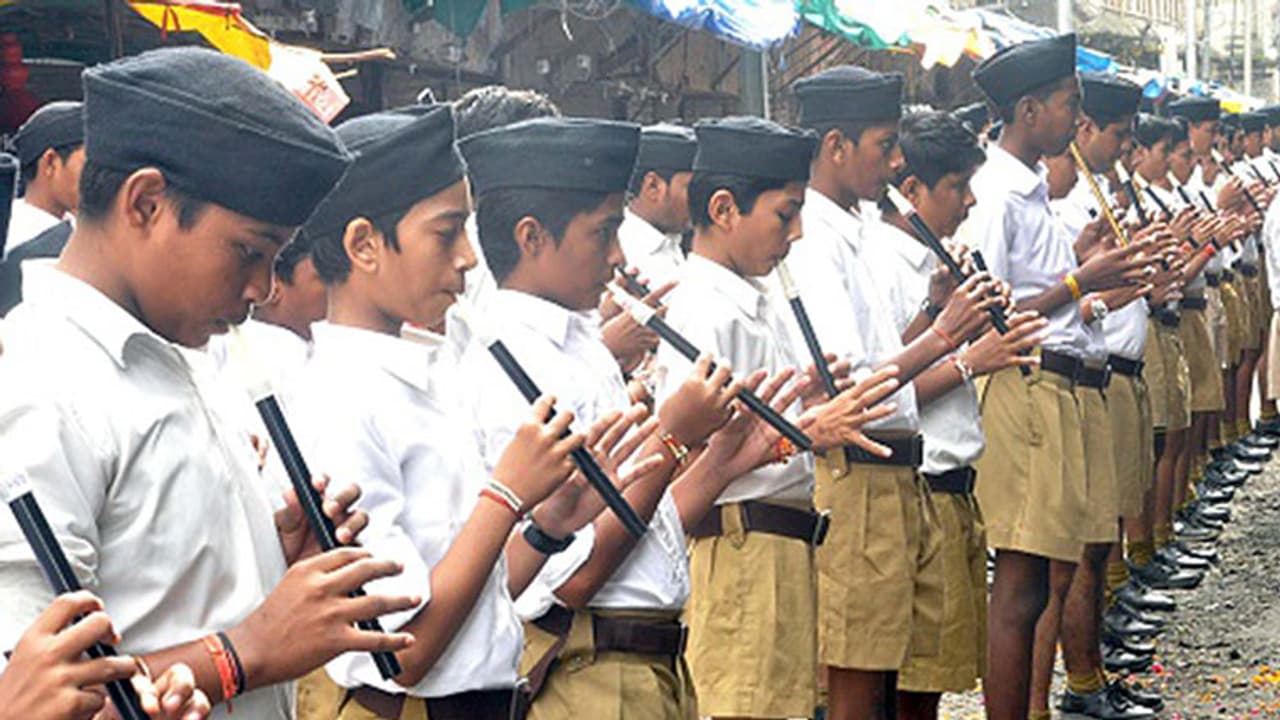Four youths were held up and beaten up allegedly by RSS-BJP workers at Kasargod for wearing red lungi. The hatred between the CPM and Sangh Parivar in the northern districts of Kerala are spreading like cancer, claiming new victims and creating a new set of norms and symbols that could trigger violence any time.
Four youths including media students were allegedly detained for hours and roughed up by a group of RSS-BJP men at Kasargod on Wednesday. The youths were targeted for wearing red Mundu (lungi) in a village controlled by the saffron party. The most disturbing part of the episode was that the ruffians singled out non-Hindus in the group,harassed.

The youths, including a female student, were held up by nearly 40 BJP-RSS men in a Sangh Parivar stronghold at Kanhangad in Kasargod. "How dare you enter our village in red Mundu," the BJP workers asked Jaffrin, who was clad in red. The miscreants also wanted him to remove it and manhandled him when he refused. The female student and a woman who tried to save the youths from the gang were also attacked.
Jaffrin was later admitted to a hospital in Kannur. The victims said that they went to the village to prepare a documentary on the Theyyam festival.
The brazen attack over the colour of Mundu also shows that the rivalry and hatred between the CPM and Sangh Parivar in the northern districts of Kerala are spreading like cancer claiming new victims and creating a new set of norms and symbols that could trigger violence any time. The political hotheads are making their rules and targeting others for not complying with them.
Keralites generally wear red, saffron and green cotton Mundu as an informal attire, irrespective of political allegiance. But in the politically sensitive northern districts where the parties take pride in controlling their 'party boroughs' as quasi-governments, certain colours and symbols do matter.
Sangh Parivar activists used to wear Saffron lungi for their programmes. But it was not their monopoly, and even Communists used to wear it. As the Sangh willfully making its presence felt across the state and the Sanghis increasingly making their political inclinations public, they started to flash their symbols without inhibition- saffron Mundu with a white shirt, pink tilak on forehead and rakhis (Raksha Bandhan) tied to their hands throughout the year! When the Sangh Parivar men began asserting their symbols in public, general public started to avoid such signs that were once ‘secular.’ Saffron Mundu was the first casualty of this appropriation.
A couple of years back, some weavers in Kannur, the forte of CPM, introduced a red variant of the cotton Mundu and it trended among youths in the party within no time. It soon became a dress code of sorts among young comrades there. A good number of CPM supporters shunned saffron Mundu and opted the flashy red ones. Local party leaders unofficially instructed their men to come in red at party programmes. Gradually youths clad in red Mundu paraded in party processions.
Ideologies and democratic debates take a back seat when a cannibalistic rivalry becomes the innate motivation for political activity. A set of symbols- uniforms, insignia, subtle mannerisms, unique ways of greeting and secret codes that allow you to differentiate your men from enemies are signs- of your organisation gaining strength.
But the proliferation of these symbols as a project and the deliberate attempts to assert them in public are signposts to burrows where those terracotta warriors are lined up.
